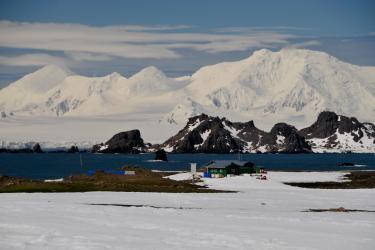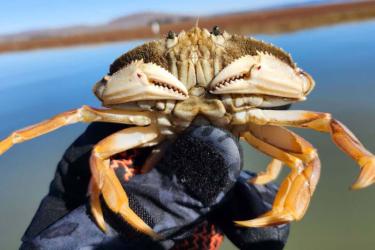The Groundfish Ecology Program in the Fisheries Resource Analysis and Monitoring Division of NOAA's Northwest Fisheries Science Center conducts three fishery-independent surveys:
- Joint U.S.-Canada Integrated Ecosystem and Pacific Hake Acoustic-Trawl Survey
- West Coast Groundfish Bottom Trawl (WCGBT) survey
- Southern California Shelf Rockfish Hook & Line (H&L) survey
Each year volunteers from academic institutions and other State and Federal agencies assist with biological sampling and research operations at sea. The data we collect covers hundreds of species and are used in stock assessments for many West Coast groundfish.
What to expect
Volunteers will assist NOAA biologists and may be required to:
- Sort and identify fishes and invertebrates to species following specific sampling protocols.
- Collect biological data from organisms, including dissections to extract stomachs, gonads, age structures (i.e., otoliths, spines, fin rays, and vertebrae), and other items.
- Work on a vessel at sea for long periods (7-21 days depending on the survey) under variable, sometimes harsh, weather conditions.
- Work and live in close quarters with other scientists and crew members.
Each fisheries survey is unique in its sampling methods, vessel characteristics, and crew size. Follow the links below to find out specifics for each survey and points of contact:
- West Coast Groundfish Bottom Trawl Survey - WCGBTS spans the entire west coast, running from the Canadian border to the Mexican border. The survey uses chartered, commercial fishing vessels in the ~80 ft range, and each survey leg is 7-10 days long. Volunteers will work with two additional scientists and 3-4 crew.
- Southern California Shelf Rockfish Hook and Line Survey - This survey is carried out in the Southern California Bight using chartered commercial passenger fishing vessels (CPFVs) 60-70 ft long with three scientists and 4-6 crew.
- Joint US-Canada Integrated Ecosystem and Pacific Hake Acoustic-Trawl Survey - This survey spans from about Point Conception, CA, to Queen Charlotte Sound, BC, and is conducted jointly with scientists from the Department of Fisheries and Oceans (DFO), Canada. It takes place on larger NOAA operated vessels (~200 ft) with 20 crew members and 13 scientists. Volunteers will bunk and share a head with up to 3 other scientists.
Benefits of Being a Survey Volunteer
- Invaluable first-hand experience with fisheries data collection
- The chance to meet and work with real commercial fishermen.
- Work outside and disconnect from the worries of the world.
- See many unique ocean creatures*, including blue whales, mola molas, and deep-sea sharks. (*Actual sightings are not guaranteed)
General Qualifications
Volunteers must be able to:
- Lift and carry 35 pounds while walking on a moving surface.
- Stand for long hours on deck in harsh weather conditions.
- Ascend and descend steel stairs and ladders.
- Hear a general alarm (hearing aid permitted).
- Pass a Sea Safety and Cold Water Survival course.
- Additionally, it is highly advisable that you know in advance how vulnerable you are to seasickness.
Contact Us
Interested in volunteering? Submit your contact information on our NWFSC Survey Volunteer Interest Form.










